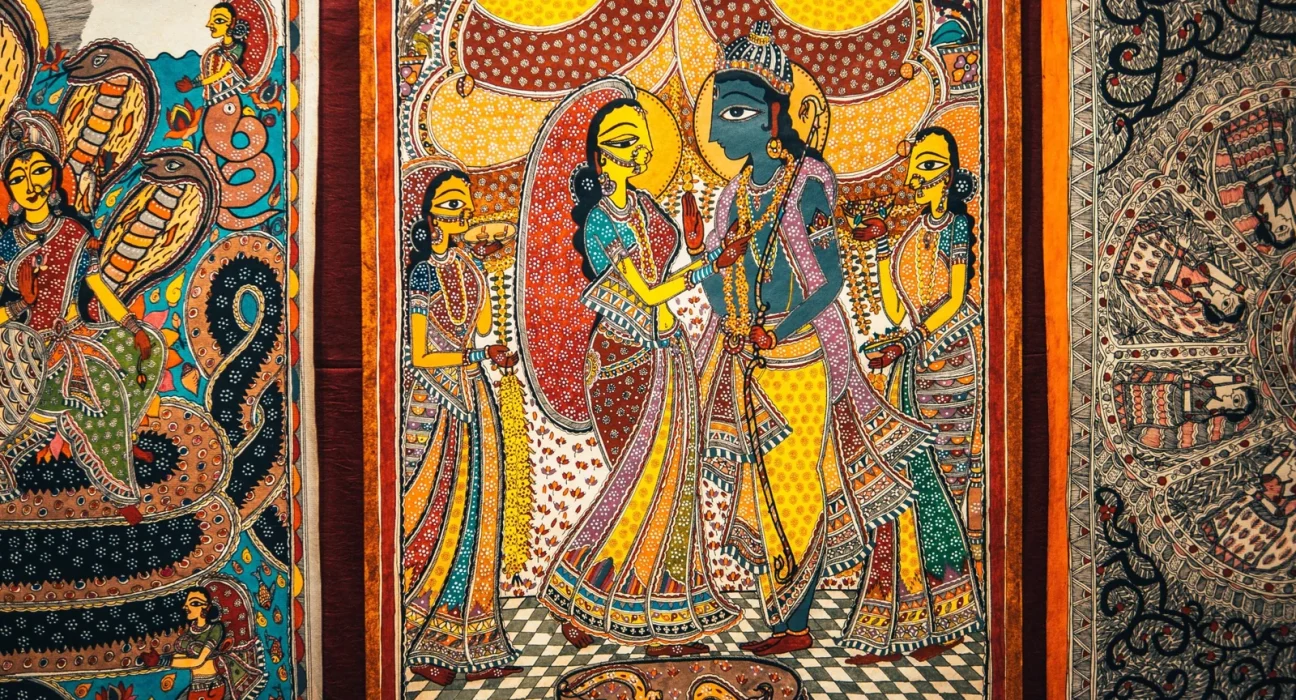The Cultural Significance of Tribal Art in India

Tribal art in India is a living testament to the country’s rich cultural diversity and historical roots. The indigenous tribes of India, with their deep connection to nature, spirituality, and their unique way of life, have produced art that is not only visually captivating but also deeply symbolic. These artworks carry centuries of history, stories, and traditions that reflect the worldview and values of India’s tribal communities. The significance of tribal art extends far beyond aesthetics; it is an integral part of the tribes’ identities, a mode of expression, and a means of preserving their cultural heritage.
The tribal art of India is as varied as the numerous tribal communities that create it. With over 700 tribal communities across India, each with its own distinct traditions, languages, and cultural practices, tribal art reflects the diversity of the nation. These art forms range from intricate paintings and carvings to textiles, pottery, and sculptures, often made using materials sourced from the natural surroundings. The art is deeply intertwined with the spiritual beliefs, rituals, and everyday life of tribal communities. It is used in religious ceremonies, as a form of storytelling, to mark important social events, or simply as a means of connecting with the natural world.
One of the most well-known forms of tribal art in India is Warli painting, which hails from the tribal communities of Maharashtra. These paintings, characterized by simple yet captivating geometric patterns, depict scenes of daily life, nature, and animals, reflecting the harmonious relationship between the people and their environment. The use of white pigment on a mud wall, often against earthy tones, is a distinct feature of Warli art, which has gained global recognition in recent years.
Similarly, Madhubani painting, originating from the Mithila region of Bihar, is another celebrated tribal art form that portrays themes of mythology, nature, and social life. The paintings are characterized by intricate patterns and vibrant colors, often depicting gods, animals, plants, and natural elements. These paintings have a deep cultural and spiritual significance, with each design representing different beliefs, stories, and deities from local folklore.
Another significant tribal art form is Pattachitra from Odisha, which involves intricate hand-painted depictions of stories from Hindu mythology. The art form is noted for its fine lines and use of natural colors, often incorporating religious and spiritual themes into the artwork.
Tribal art in India is not just a form of decoration, but a means of storytelling and preserving oral histories. Through their art, tribal communities pass down tales of their ancestors, spiritual beliefs, and their relationship with the land. These art forms also serve as a reflection of the social and cultural life of the tribe, with designs often representing rites of passage, deities, natural elements, and even personal achievements.
The cultural significance of tribal art is also seen in its role in community identity. Tribal art forms help strengthen social cohesion within a community by marking cultural milestones, celebrating festivals, and reflecting the shared history and values of the group. These art forms help reinforce connections with ancestors and nature, ensuring that the community’s heritage is carried forward to future generations.
However, tribal art faces challenges in the modern era. Globalization, urbanization, and the rise of digital art have caused many traditional tribal art forms to be overshadowed. Younger generations are often moving away from these age-old practices in favor of more contemporary forms of expression. Furthermore, the commercialization of tribal art has led to concerns about the dilution of its authenticity, as artisans often modify their creations to cater to market demands, sometimes at the cost of tradition and cultural integrity.
Despite these challenges, there has been a renewed interest in tribal art both within India and internationally. The rise of the global art market and the increasing awareness of the importance of indigenous cultures have provided a platform for tribal artists to showcase their work. Government initiatives and non-profit organizations are also working to support tribal artists by providing them with platforms to exhibit their work and ensuring that the cultural heritage of tribal communities is preserved.
Tribal art also plays a crucial role in the preservation of biodiversity and environmental awareness. Many tribal artworks depict the flora and fauna of their surroundings, emphasizing the importance of protecting nature. By supporting these art forms, there is an opportunity to educate people about the significance of environmental conservation and the sustainable lifestyles followed by tribal communities.
The cultural significance of tribal art in India cannot be overstated. It is a powerful expression of the country’s diverse cultural history, deeply rooted in the spiritual and social lives of its indigenous communities. As India continues to modernize, it is essential to recognize and preserve these art forms, not just for their beauty, but also for their role in safeguarding the cultural heritage and values of tribal communities. By doing so, we can ensure that tribal art continues to thrive, telling the stories of India’s past and its people for generations to come.
In conclusion, tribal art in India is more than just a creative outlet; it is a reflection of the tribes’ deep connection with nature, their spirituality, and their cultural identity. Preserving and promoting these art forms will ensure that the richness of India’s indigenous heritage is honored and passed on to future generations. As we embrace modernity, it is important to remember the role of these traditional art forms in shaping the cultural fabric of India, providing a window into the lives and histories of its tribal communities.










